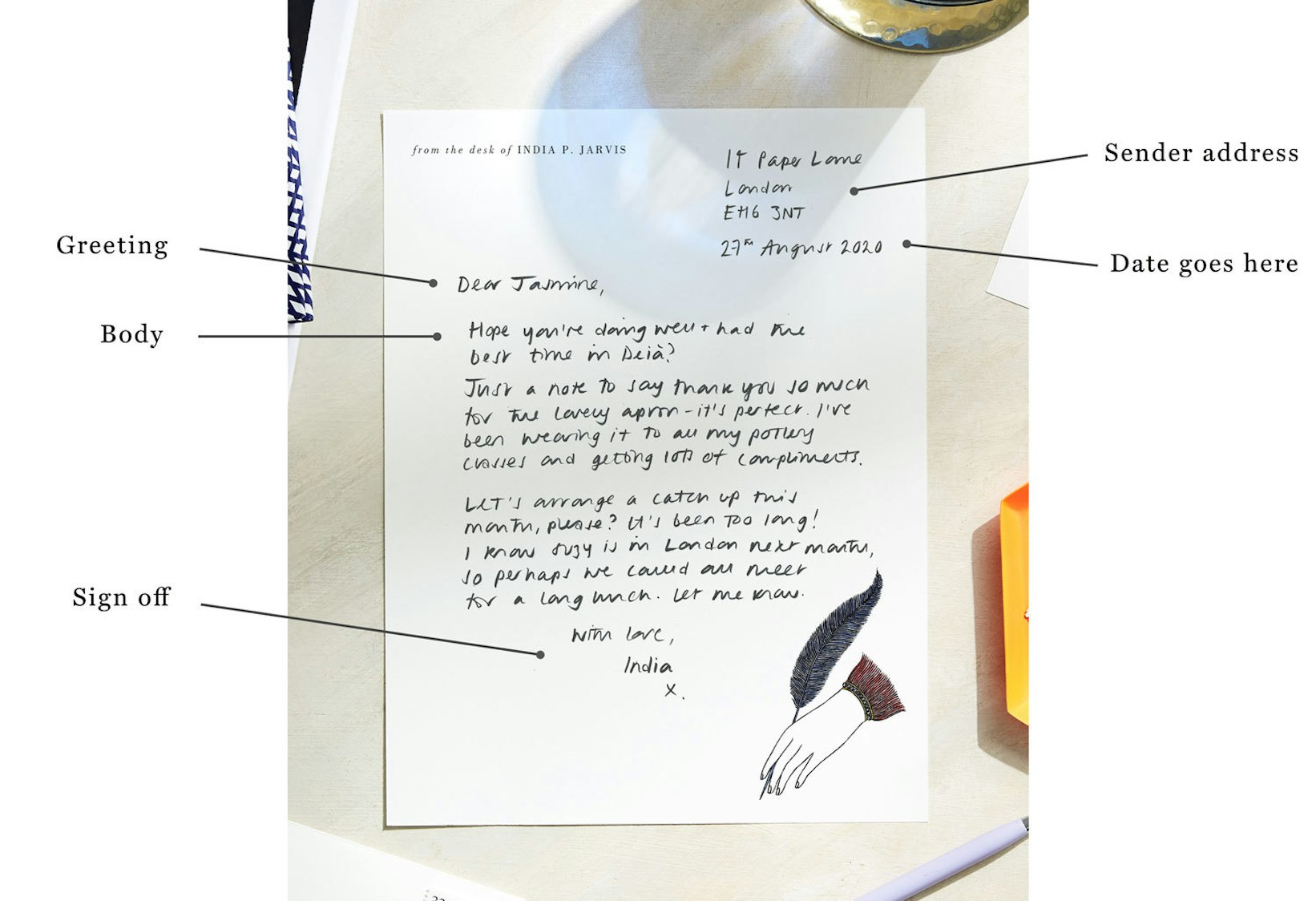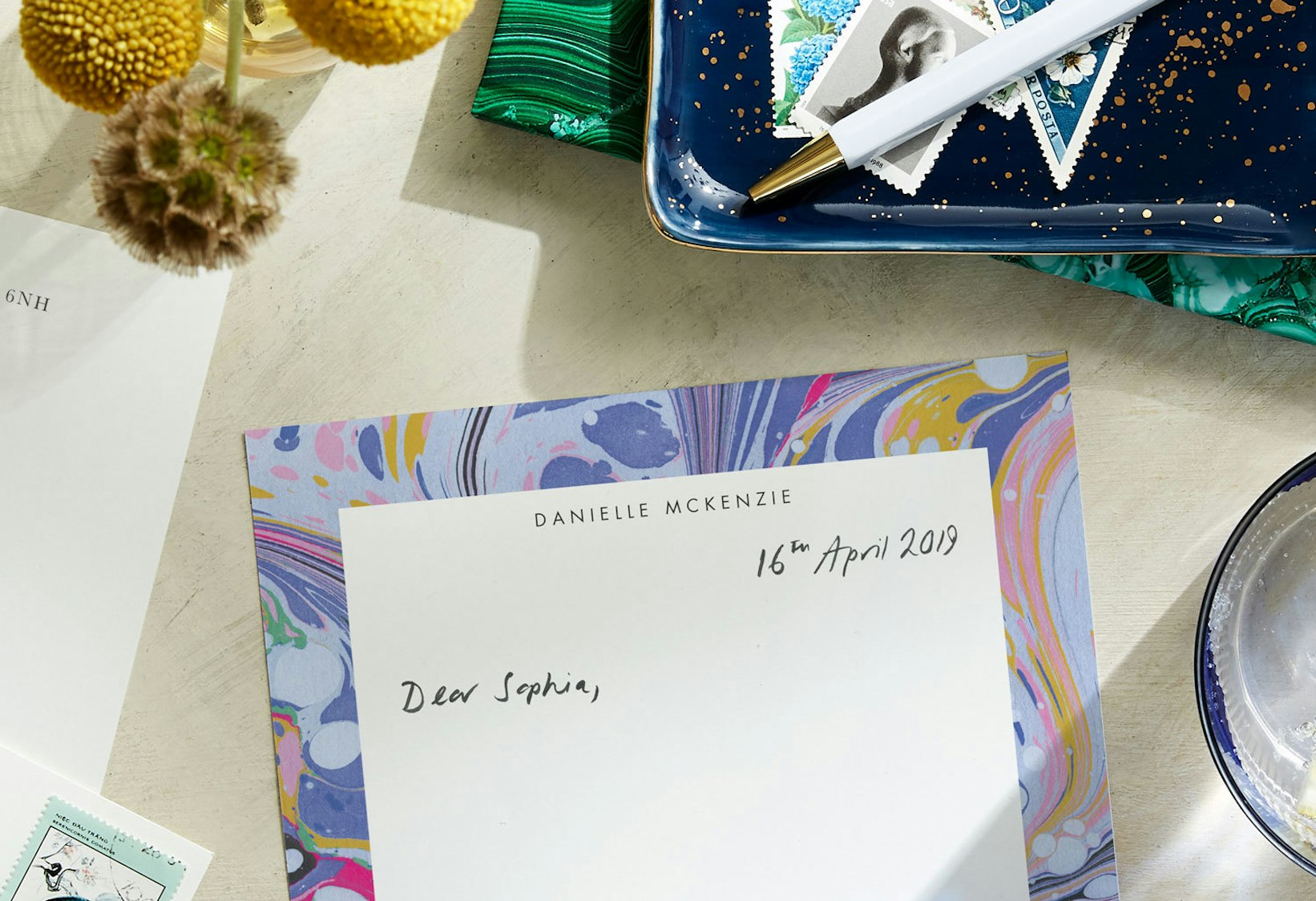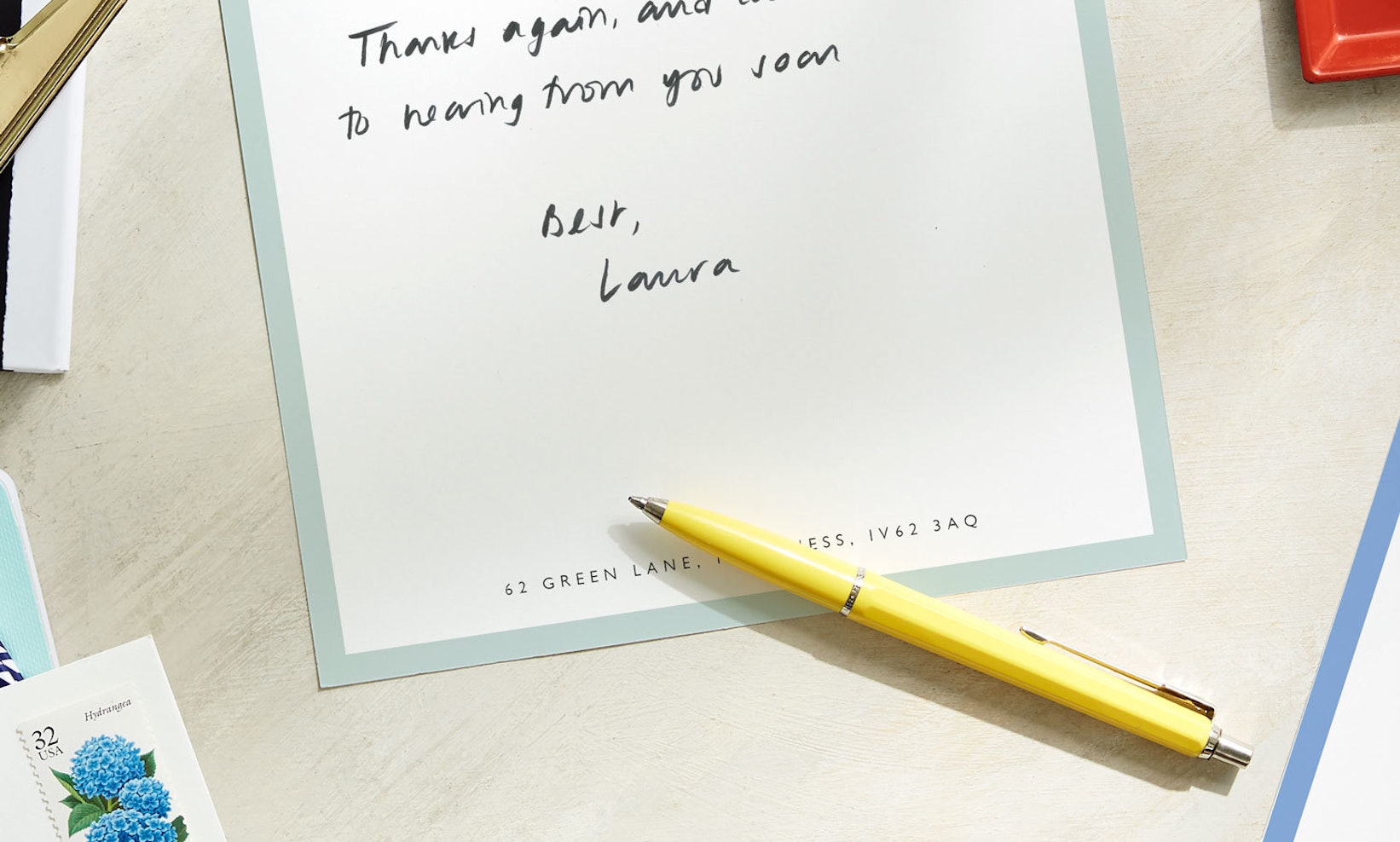Letter writing 101
How to write letters to loved ones
It’s official. Letter writing is having a revival. In these digital days, when most of our messages are seen on screen and sent in an instant, the notion of receiving a thoughtful, handwritten note through the post feels more special than ever.
It’s a chance to press pause on the fast pace of life. The sender gets to stop, slow down and enjoy the pleasure of putting pen to paper; the receiver winds down as they carefully unfurl a meaningful message from someone who cares.
Knowing what to write can be a little tricky, especially when you’re faced with very lovely writing paper. But, whether you’re scribing a love letter, an apology letter or a thank you letter, our how-to guide should deliver some helpful reminders and tips.
Letter template – structure of a personal letter

Sender address
(optional if you know the person very well)
14 Paper Lane,
London,
EH5 3UT
Date goes here 27th August, 2020
Greeting Dear Jasmine,
Body Hope you're doing well and had the best time in Deià? Just a note to say thank you so much for the lovely apron - it's perfect. I've been wearing it to all my pottery classes and getting lots of compliments. Let's arrange a catch up this month, please? It's been too long! I know Suzy is in London next month, so perhaps we could all meet for a long lunch. Let me know.
Sign off
With love,
Delilah
How to start a letter

The beginning of your letter depends on who you’re writing to and why. Think about how well you know the person and whether your letter is formal, informal or somewhere in between to decide on your tone. Here’s a few examples:
To whom it may concern,
Tone: Very formal/traditional
For addressing: People you don’t know
Dear Sir or Madam,
Tone: Formal/traditional
For addressing: People whose gender you know but name you don’t
Dear [Ms. Hardy],
Tone: Formal/modern
For addressing: General letters to people you don’t know well
Dear [Samuel],
Tone: Semi-formal/traditional
For addressing: People you know well or someone you know on a first-name basis
To [Anya],
Tone: Semi-formal/modern
For addressing: People you have a good, friendly relationship with
Hi/Hey [Nico]
Tone: Informal/modern
For addressing: Friends and family
To my [amazing big sister],
Tone: Very informal/modern
For addressing: Close friends, family, partners or anyone you want to show affection to
How to end a letter

Signing off your letter is just as important as the start. Once again, think about who you are speaking to and the content. Notes to loved ones call for a conversational round-off, whilst formal letters should be finished with a traditional closing. Remember to capitalise only the first letter of your sign-off and to write your signature underneath your full name for business and legal letters.
Yours sincerely,
Tone: Formal/traditional
For signing off: Letters that are addressed with someone’s name
Yours faithfully,
Tone: Formal/traditional
For signing off: Letters to someone you don’t know, usually correspondence beginning with ‘Dear Sir/Madam’
With sympathy,
Tone: Formal/traditional
For signing off: Letters of condolences
Best wishes,
Tone: Semi-formal
For signing off: Letters to people you have a good relationship with, from relatives to work associates
Best,
Tone: Semi-formal/contemporary
For signing off: Letters to people you’ve written to a few times
Many thanks,
Tone: Semi-formal/contemporary
For signing off: Letters to show your appreciation for the time or efforts of someone you know
Love from,
Tone: Informal/contemporary
For signing off: Letters to friends and family or anyone you love!
How to address a letter

How to set out your letter depends on the kind you’re writing. Business letters should include both the sender and recipient address, while personal letters can omit the recipient address and sometimes the sender’s too. We suggest all letter include the date – it’s essential for formal letters and a nice touch for social ones.
Sender’s address
The letter author’s address should include full address and postcode and be placed on the top right-hand side of the page. If you already have your address printed in a letterhead, then there’s no need to write it out.
Recipient’s address
The recipient address should include their name and title (e.g. Dr Warwick) along with their full address and postcode. Include their company name for business letters too.
Date
The date usually sits on the right-side of a letter, 1-2 lines beneath your address. For the UK, the format is day-month-year, e.g. 24th September 2021. And in the US, it’s month-day-year, e.g July 17, 2023.
Extra tips to note
Pick a good pen & writing surface
- Choose a pen with a nice nib to ensure your best handwriting.
- Double check that the surface you’re writing on is flat and stain-free.
Choose writing paper that reflects the vibe of your letter
- Fun prints, like unicorns, flamingos and bumblebees, are perfect for sharing good news or a note of thanks.
- Simple borders or smart monograms work well for more serious letters.
Draft your letter on a rough piece of paper
- Mark Twain once wisely said: “I didn't have time to write a short letter, so I wrote a long one instead.” Penning your words on a scrap paper will help you think about exactly what you want to say and how to space it evenly across your page(s).
Be concise for formal letters
- Get to the point in formal letters, stating the purpose in the opening paragraph, and don't stray from the subject.
Be yourself in personal letters
- Don’t feel the need to be serious or alter your usual tone of voice when putting pen to paper. Write as you speak to bring your personality to the page.
- Remember doodles are always welcome when writing to best friends or true loves. Take a leaf out of the letters of Charles and Ray Eames.
Proofread!
- Read your letter over to check for mistakes once you’re done.
- You can scribble out small errors on personal letters (hey, it adds character), but start over if you’re writing a formal correspondence.















